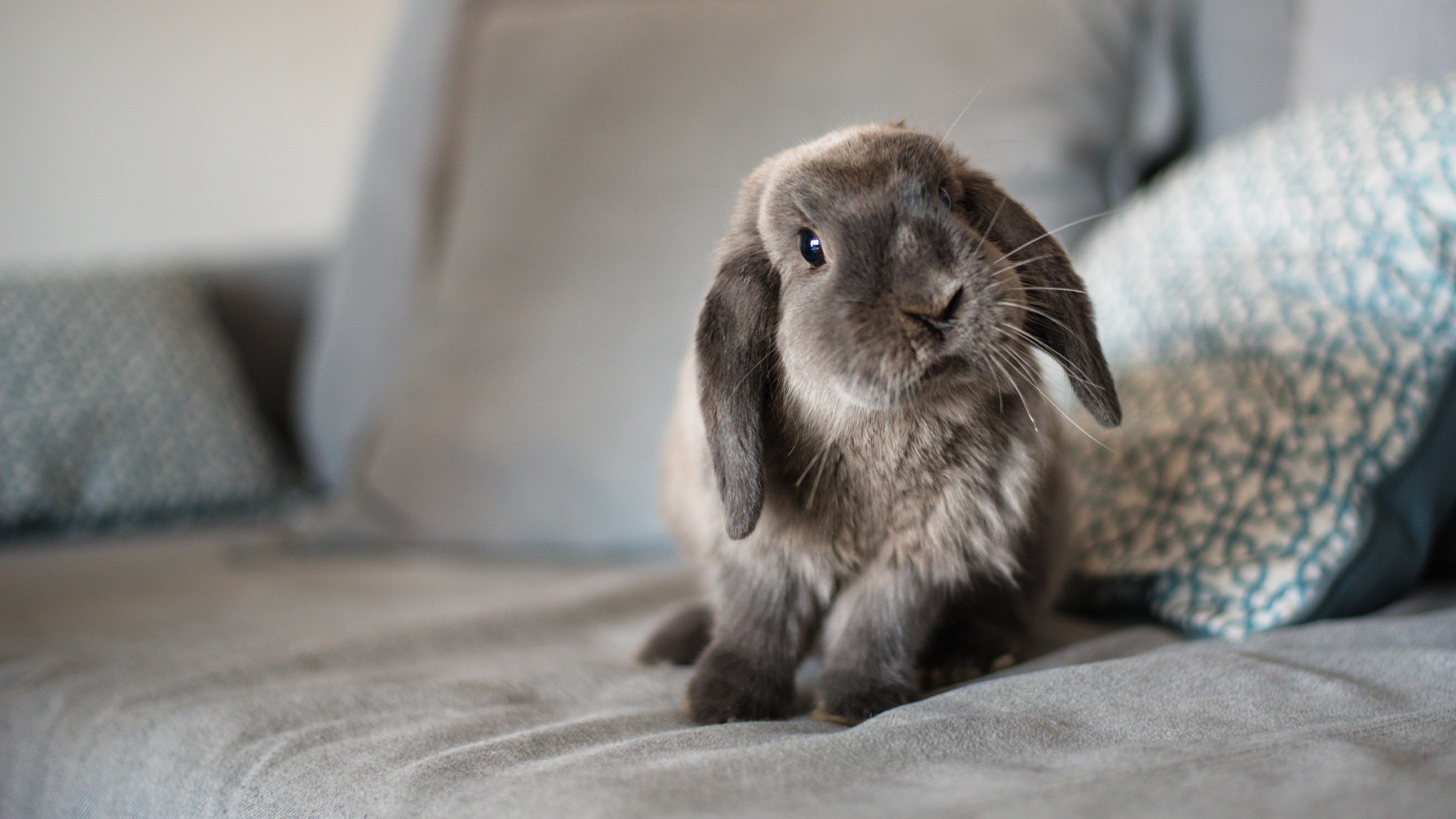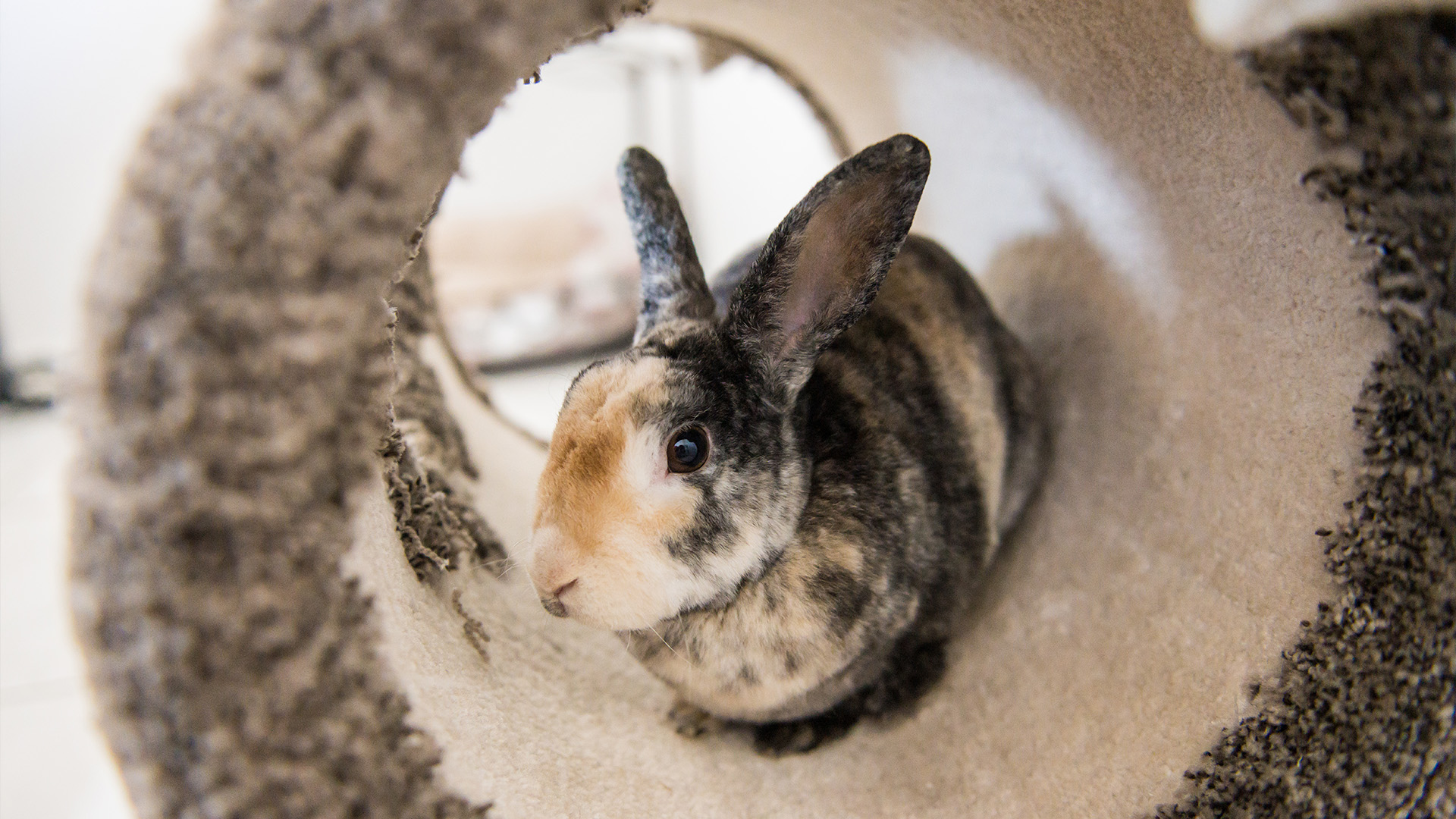
Are you currently researching housing rabbits indoors? If so, you’re not alone. A recent poll by the PDSA found that, for the first time ever, there are more pet rabbits living indoors than rabbits housed outdoors.
In this article we’ll go through some common questions potential owners have about housing rabbits indoors, and take a look at how to make sure your bunnies lead happy lives inside. We spoke with vet Dr Rebecca MacMillan for her expert take on how to keep house rabbits healthy.
Is it OK to keep rabbits indoors?
Most rabbits can live indoors, so long as they are properly cared for and provided with adequate accommodation. Here are some tips from a vet about how to care for a house rabbit.
How much space does a house rabbit need?
The answer to the very common question of "How much space does a rabbit need?" is more than you might think.
“House rabbits should have as much space as possible. As a minimum, they should have access to a 3m x 2m by 1m [10ft x 6.5ft x 3ft] high area at all times. Within or attached to this exercising area you should ensure your rabbit has a living space to retreat to,” says Dr MacMillan.
As well as an exercise area, they should have a dedicated spot for sleeping, too. “A hutch is an ideal cosy area for a rabbit to sleep in, as long as it measures a minimum of 1.8m x 0.6m x 0.6m high,” she adds. We’ve rounded up a selection of the best indoor rabbit hutches that meet these requirements.
What accommodation does an indoor rabbit need?
When it comes to housing rabbits indoors, there are three main options:
- Free range – rabbits are given the run of the house
- A room – rabbits are given access to a rabbit-proofed room
- Part of a room – an area of a room is securely cordoned off for the rabbits
The free-range option is a big commitment, as you’ll need to make sure everywhere the rabbit has access to is rabbit-proofed. If you like this option, start with a smaller area first, especially if you are getting young bunnies and still working on litter training your house rabbit.
The next two options are more common, as it’s easier to rabbit proof one room than the whole house! Popular options are utility rooms and kitchens, as these often have solid flooring which is easier to clean than carpet. Conservatories are sometimes used, but you’d have to be mindful of it not overheating in summer.
“The advantage of having a specific area of the house is that you can ensure it is completely rabbit-safe and easy to clean. Carpets can get soiled or damaged through digging, so bear this in mind when deciding where to situate your pet,” says Dr MacMillan.
Can an indoor rabbit go outside?
Yes, in fact it’s encouraged.
“I always recommend that owners take their house rabbits outside if they can. Rabbits require vitamin D for healthy teeth and bones (just as we do), so getting natural sunlight will help with this. House rabbits can be deficient in vitamin D as glass can block certain UV rays,” advises Dr MacMillan.
It’s not just their physical health that benefits from a run around outside either.
“I also believe that it is important for their mental well-being, with different sights and smells providing much-needed stimulation. Most rabbits will also enjoy the opportunity to graze on fresh grass and the soft ground tends to be better on a rabbit’s delicate feet and hocks than carpeted or hard floors,” adds Dr MacMillan.
But how do you facilitate outdoors time for an indoor rabbit? If you have a garden, a large exercise enclosure or one of the best rabbit runs would be ideal and usually preferable compared to the best rabbit harnesses.
“A harness and leash can be used on a rabbit but remember that they need to be gradually trained to accept it. Rabbits are also prey animals so can feel vulnerable to attack if walked in an area where cats and dogs might be present, so this should be avoided,” says Dr MacMillan.

How to keep an indoor rabbit happy
Indoor rabbits can lead happy and fulfilled lives, so long as they are properly cared for. This means plenty of stimulation and, where possible, access to outside.
“Indoor rabbits require plenty of mental stimulation as well as having a large enough area to run and jump in. Owners should have plenty of interactive toys, changing them regularly to avoid boredom. Provide plenty of bedding material so that your rabbit can display natural behaviours like nesting and digging. Some owners may even provide a digging box, filled with substrate or soil for their rabbits to dig around in,” advises Dr MacMillan.
We’ve put together guides on the best rabbit toys and best rabbit bedding options to help you keep your rabbit stimulated.
Can indoor rabbits live with other pets?
Rabbits should live in pairs wherever possible, as they have evolved to live in groups and without another rabbit they simply won't thrive.
However, a pair of rabbits can live with certain other species, too. There are plenty of cases of rabbits living with dogs and cats, it depends on the individual animal in question and whether or not they show predatory behaviours.
When adding new pets to your home, it's important to remember that your first duty of care should be to the animals that you already have.
Should I vaccinate my indoor rabbit?
“You should still vaccinate your house bunnies as fatal diseases can be spread from infected wild rabbits by insects, such as flies or mosquitoes. These insects can easily enter our homes, so it is best to protect your pets,” says Dr MacMillan.
Can you litter train a rabbit?
Rabbits are surprisingly easy to litter train, though no animal is perfect and you should brace for the occasional accident. To house-train a rabbit, start off with one of the best rabbit litter boxes in a small area whey they usually go to the toilet. Gradually increase the space they have access to as they become more reliable with their tray. Here are some more tips on how to litter train a rabbit.
Want to learn more about caring for rabbits? Here are our favourite interesting rabbit facts, advice on how to cut a rabbit’s nails and how to keep a rabbit cool in the summer







